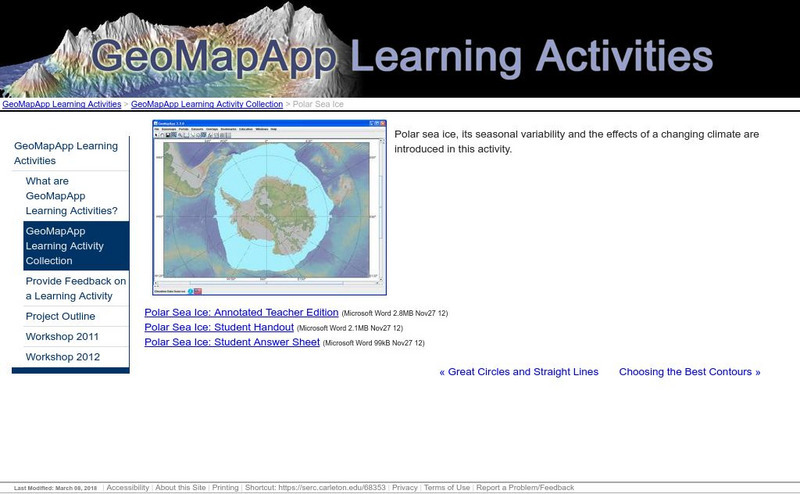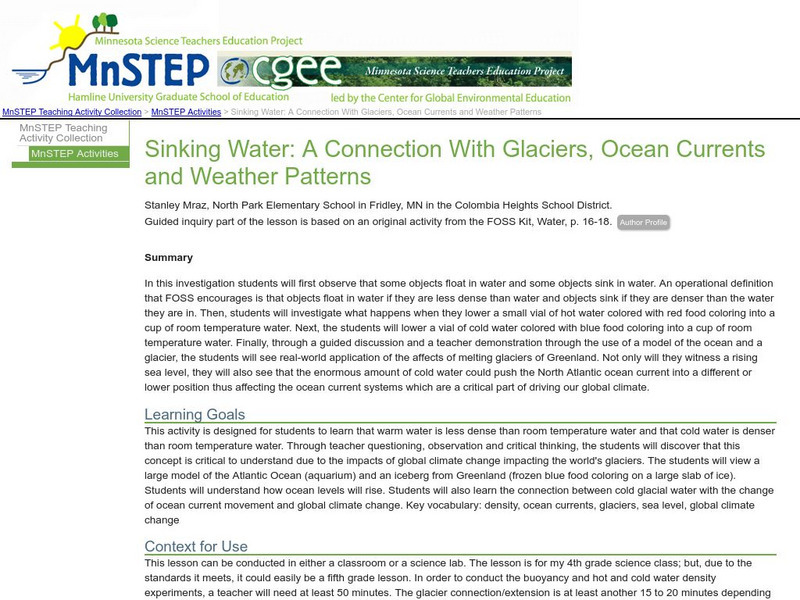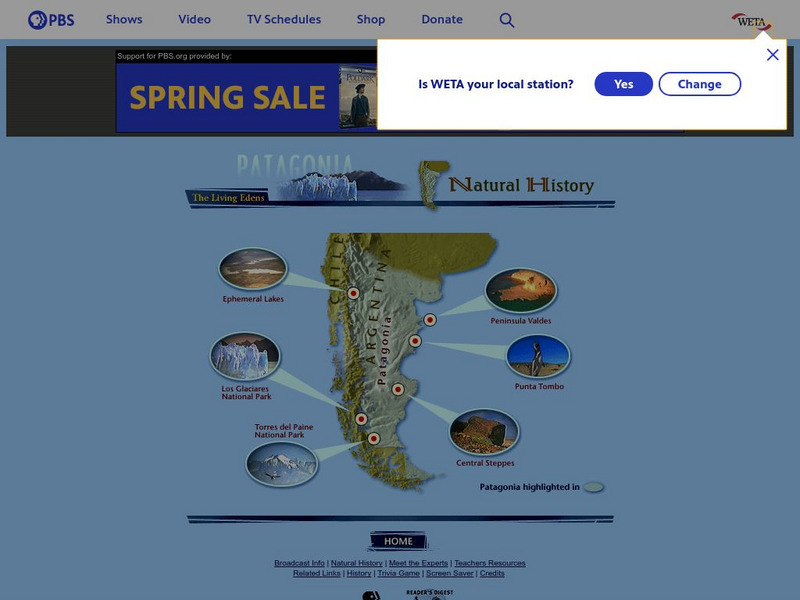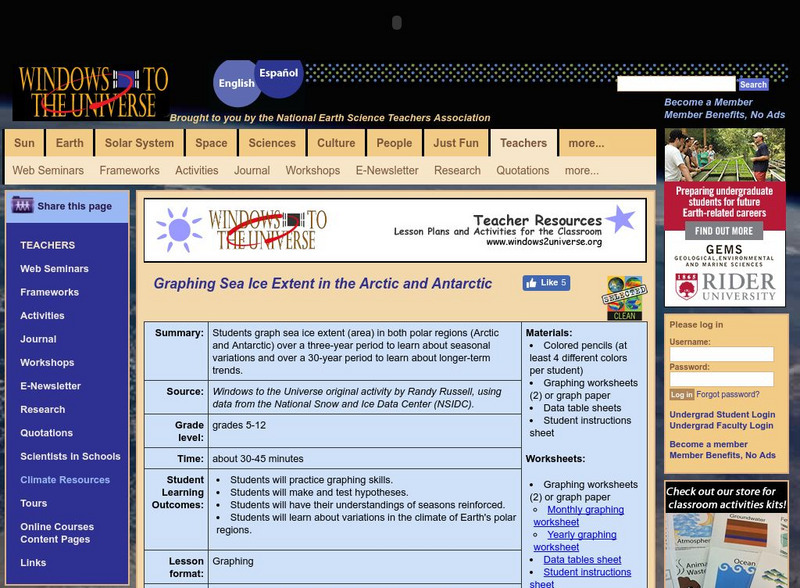Hi, what do you want to do?
Science Education Resource Center at Carleton College
Serc: Polar Sea Ice
Polar sea ice, its seasonal variability, and the impact of a changing climate are investigated in this activity. Students will also explore the differences between polar regions that result from Antarctica being a continent and the north...
Science Education Resource Center at Carleton College
Serc: Arctic Climate Curriculum, Activity 1: Exploring the Arctic
This activity introduces students to the Arctic, including different definitions of the Arctic and exploration of the Arctic environment and Arctic people. Students set out on a virtual exploration of the geography of the Arctic using...
Science Education Resource Center at Carleton College
Serc: Mn Step: Sinking Water: Glaciers, Ocean Currents and Weather Patterns
A lesson where students learn how warm water is less dense than cold water, and what this means for global climate change as ice from the polar regions melts. Students will do experiments in buoyancy and water density when hot or cold,...
PBS
Pbs: The Living Edens/patagonia/natural History
This site lets you click on six different spots in the Patagonian region of Argentina to learn about the physical geography. For each area, a description is given along with information on conservation efforts.
Climate Literacy
Clean: Carbon Cycle Game
In this interactive, regionally-relevant carbon cycle game, students are challenged to understand the role of carbon in global climate change. They imagine that they are carbon molecules and travel via different processes through carbon...
Science Education Resource Center at Carleton College
Serc: From Grid to Home
Students analyze energy use, cost, and source patterns from household to regional scales and relate these patterns to CO2 emissions.
National Earth Science Teachers Association
Windows to the Universe: Graphing the Extent of Sea Ice in Arctic and Antarctic
Students graph sea ice extent in both polar regions over a three-year period to learn about seasonal variations, and over a 30-year period to learn about longer-term trends.
Other
My Science Box: Ecosystem Organization
In this lesson, students will learn about the different levels in the hierarchy of ecology and explain the relationships: organism, population, community, ecosystem, biome, and biosphere. They will also discover why different regions...
PBS
Pbs Learning Media: North American Monsoon
NASA tracked rainfall and soil moisture for a three-month period in 1993 to confirm that these rain patterns were indeed a monsoon. Watch this animation to see the relationship between soil moisture and rainfall in the Southwest U.S. By...
Science Education Resource Center at Carleton College
Serc: Do You Really Want to Visit the Arctic?
This jigsaw activity is designed for students to become familiar with several datasets of Arctic weather data, collected in Eureka on Ellesmere Island. Students join a role-playing activity to read and interpret graphs while considering...
PBS
Pbs Learning Media: Exploring Environmental Change
Students explore the connections that can exist in a natural environment, and examine how changes to the environment, particularly those caused by human activity, can affect those connections.
The Wonder of Science
The Wonder of Science: Ms Ess2 6: Atmospheric and Oceanic Circulation
Work samples, phenomena, assessment templates, and videos that directly address standard MS-ESS2-6: atmospheric and oceanic circulation.
University of Texas at Austin
University of Texas: Human Environmental Interactions [Pdf]
Inspired by Hemispheres' 2004 Teachers' Summer Institute, People and Place: Human-Geographic Relations, this curriculum unit was designed to address human adaptation to and modification of the environment. How have humans adjusted to...














